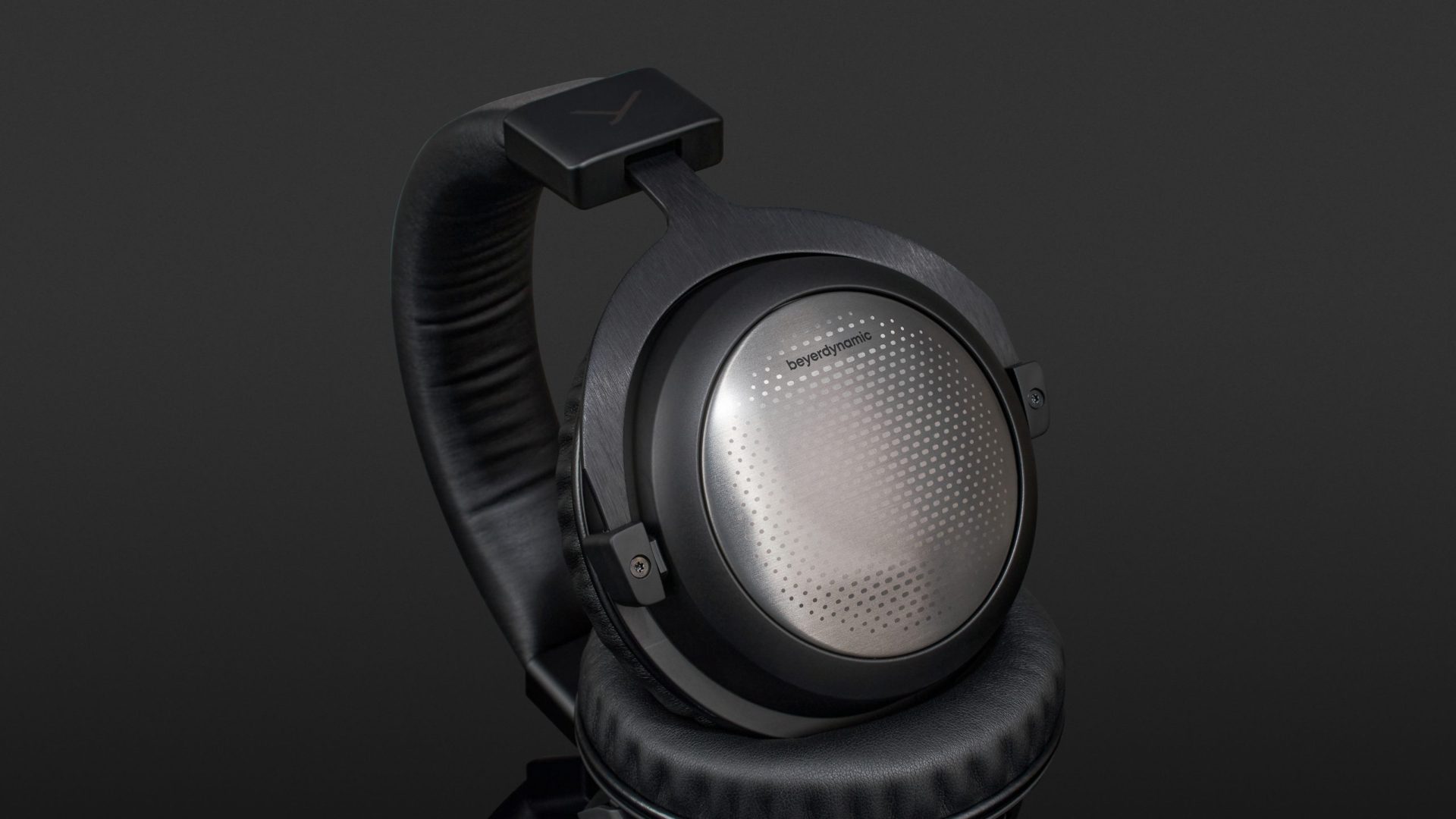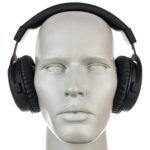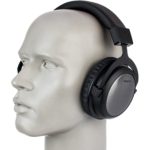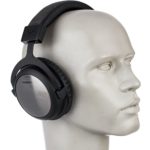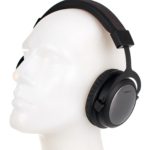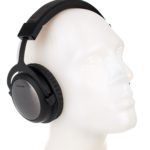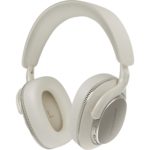The T5 3rd. Gen from Beyerdynamic are – like the previous models – extremely interesting hi-fi headphones with proven Tesla drivers, a high-quality finish and good wearing comfort, which in this closed design is well suited for use in loud environments. I would have liked to see Beyerdynamic include a long connection cable (3 metres) with these headphones – especially considering the price – and it would be an improvement if the connection of the cable to the headphones could somehow be more “snug”. On the other hand, the sound tuning was far from linear (the keyword here is “hi-fi”), and this makes the sound a “matter of taste” and does not work equally well with all types of music. Beyerdynamic has already convincingly demonstrated that their Tesla drivers are capable of this without any problems. A trial listen with these headphones is therefore highly recommended!
Almost exactly four years ago, the second generation Beyerdynamic T 5 entered the market, and they performed impeccably. Accordingly, the Heilbronn-based manufacturer was awarded “Best HiFi Headphones 05/2016” by us. Now, these high-end headphones are back – in their third generation.

The MK3 version also has a recommended retail price of just under one thousand euros. This implies that we are in the luxury segment and that updates to the model – similar to those in the automotive industry – tend to come in small increments. This is understandable because no long-time fan of the T5 who decides to buy a new pair suddenly wants a completely different product in their hands (or on their ears), but naturally, this also restricts the innovations of the developers to a certain extent.
With this in mind, the core qualities of the T5 remain completely unchanged in their third generation: These are closed, circumaural high-end headphones that use the proven Tesla drivers (that are individually measured and paired!) that are assembled by hand by Beyerdynamic in their Heilbronn factory. If you prefer an open design with an air-permeable rear panel (and there are good reasons for this – especially for hi-fi use in quiet environments), then you should go for the T1 model.
Externals
The most obvious change compared to the previous incarnation is probably the omission of the cut-out on the headband and the new design of the rear panel; this is reminiscent of a perforated grid (this is identical on the T1 – there are holes for air circulation). High-quality materials with an elaborate finish have been used at every stage: For example, the headband has an Alcantara overlay with “Beyerdynamic” embossed on the top, and they have a brushed aluminium back panel.
Since both models seem to use the same headband and the DT 1990 Pro has been in daily use in my studio for four years, from my experience I can report that this is a solid construction and choice of material. A look inside the earcup shows that Beyerdynamic has used slightly angled and offset drivers, which are at an angle to the front towards the ear and are thus supposed to provide an even more natural sound image.
The connection to playback hardware is made via a 1.4-metre long, textile-sheathed cable whose conductors are made of “OCC 7N” copper – copper that is free of oxygen atoms up to the seventh decimal place. The cable is relatively rigid and torsion-resistant because it is run through two conductors next to each other up to the Y-separation. Considering the price range, I would have liked to see a 3-metre cable like the T1’s included with the T5 (and vice versa). The transducers are connected via mini-jack plugs that are plugged into the speaker pod’s slightly forward-angled sockets. As with the previous model, the connection is not secured, so with the headphones we tested, it was occasionally necessary to force the plug into the socket again with a slight twisting motion to make perfect contact.
Comfort
At 389 grams, the T5 3rd. Generation is a little on the heavy side. Thanks to memory foam in the (replaceable) ear pads and on the headband, thick padding and supple surfaces, the new T5 are nevertheless very comfortable – even during longer listening sessions. However, if you are considering the T5, you should think carefully about whether you really want or need the closed version. There’s no question that the T5 dampens external noise and spares those around you (e.g. in the office) from disturbing sound leaks – but this comes at the price of audible structure-borne sound. For example, if you suffer from permanently tense jaw muscles, you will hear a slight vibration, something which was not noticeable with the open T1 model.
Both models, whether T1 or T5, have a serial number stamped on the inside of the right side of the headband – a nice, reliable detail that gives you the feeling of owning a unique piece of kit. A high-quality, microfibre-covered padded hard case to safely store the T5 when not in use or for transport is also included.
Internal values
With its impedance of 32 ohms, the T5 Gen. 3 can be used satisfactorily with low-power mobile devices and transforms a milliwatt of current into a typical sound pressure level of 100 dB. With a frequency response that ranges from 5 Hz to 50 kHz, it is also recommended for the playback of high-resolution audio material.
Sound
As with previous generations, the T5’s sound is, technically, without fault – the Tesla drivers are highly reliable and have already been proven in countless models from Beyerdynamic. In terms of tuning, however, the developers have pursued an ideal with which I am not completely comfortable. Above an extremely robust bass foundation, they build a powerful mid-range, with a full-bellied sound in the range between 800 and 1,000 Hz. Fortunately, the developers added a little treble flourish, but this could have been a bit more generous in order to balance out the midrange. According to Beyerdynamic, the aim of this tuning was to bring out the best in vocals and instruments.
This signature works very well with modern mixed material that has been vigorously smoothed during production using dynamic equalisers and multi-band compression: For example, the T5 gives Charlie XCX’s “Forever”, which is rather blatantly digitally clipped in the breaks, an almost elegant shape, whereas Dave Brubeck’s grand piano on “In Your Own Sweet Way” (Columbia Jazz Profiles, 2008) seems a bit strained, even a bit soupy, at higher volumes. This is true for solo instruments in jazz as well as classical music precisely because these musical genres have tonal material that is not usually “damped down” as much as in pop but retains many of its natural dynamics. In Thomas Zehetmair’s ECM recording (“Sei Solo”) of Bach sonatas, for example, the violin gets a clear boost of presence in the high-mid range, which might not please all classical music fans. Low-mids, on the other hand, such as in Roger and Brian Eno’s fabulous ambient collaboration “Mixing Colours”, suit the T5 perfectly. The listener experiences all this in a well-resolved stereo field that gives no cause for complaint in terms of depth and localisation of the instruments, but where a little more treble results in a clear increase in plasticity. The T5’s drivers are capable of this without any problems, and this can be demonstrated by reaching for the equaliser: with a high-shelf boost of approx. 3 dB starting at approx. 8 kHz, the full sonic brilliance that the drivers are capable of suddenly becomes audible.
Whether this sound signature is ultimately to one’s liking is – in this league – beyond any technical consideration and is solely a question of one’s own sound preference. In direct comparison, I personally preferred the exemplary neutral, sometimes almost-surgical sound of my DT-1990 Pro from the same company, even if they are not quite as voluminous in the bass range as the T5.
Technical specifications
- Ear couplingOver-ear
- Typeclosed
- Transducer principledynamic
- Frequency response (headphones)5 - 50.000 Hz
- Impedance32 ohms
- Sound pressure level (SPL)101,64 dB
- Pressure averaged from big and small head615 g
- Weight with cable389 g
- Weight without cable342 g
- Cable length145 cm
What's in the box
- detachable cable
- travelling case











